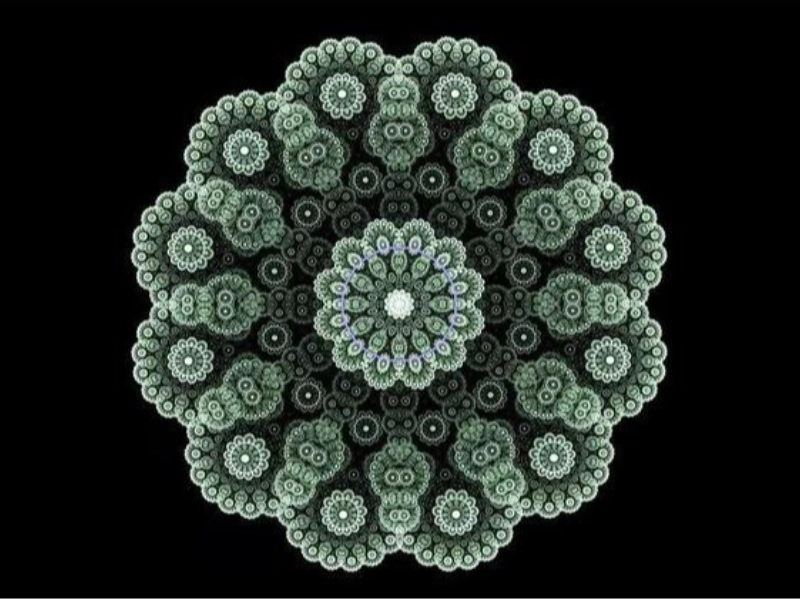Fractal Geometry: The Infinite Beauty of Repetition in Nature
Advertisement
7. The Future of Fractal Research: Emerging Trends and Possibilities

Advertisement
Fractal study changes as our knowledge of fractals deepens and technology develops, creating fresh paths for investigation and use. From pure mathematics to pragmatic uses in science and technology, fractal research promises fascinating advances across many fields.
Artificial intelligence and machine learning provide one of the most exciting directions for next fractal investigation. Neural network designs are embracing fractal ideas to produce more flexible and efficient artificial intelligence systems. Like natural systems manage complexity, these fractal neural networks have the ability to process data in a more hierarchical and scalable manner. Significant advances in pattern recognition, natural language processing, and other artificial intelligence uses could follow from this.
Within materials science, scientists are investigating how fractal architectures might provide novel materials with remarkable qualities. Fractal-inspired designs, for example, might produce highly efficient heat exchangers based on fractal space-filling characteristics or ultra-lightweight yet robust materials for aeronautical uses. Particularly the subject of nanotechnology stands to gain from fractal study since it deals with structures and events at levels where fractal characteristics become especially important.
Another field where fractal research is probably going to be rather important in the future is the study of complex systems. From financial markets to ecosystems, many intricate systems show fractal-like behavior. < New understanding of the dynamics of these systems could come from advanced fractal analysis methods, hence improving predictive models and management approaches. In disciplines like ecology, economics, and urban planning as well as others, this could have broad ramifications.
Fractal analysis is predicted to find increasing use and sophistication in medicine. Future studies might provide new understanding of the fractal character of physiological processes as well as more reliable diagnostic instruments depending on fractal analysis of medical imagery. Furthermore motivating fresh approaches to medication delivery systems and prosthetic design that more closely resembles natural biological structures is fractal concepts.
Future investigation in the fascinating junction of fractals and quantum physics could be Some scientists hypothesize that fractal shapes may help to close the distance between quantum and classical physics, therefore producing fresh insights of basic physical processes.
Fractal-based algorithms are probably going to find fresh uses in computer science in data compression, encryption, and network architecture. Effective fractal-based techniques for storing and distributing data could become ever more important if exponential growth of data volumes continues.
Another area where fractal study could be quite important is climate science. Climate systems' complicated, multi-scale character fits rather nicely with fractal models. More accurate climate models and improved knowledge of events like turbulence in the ocean and atmosphere could result from future study.
Though future study is probably going to find fresh instances of fractal structures and processes in the natural world, the study of fractals in nature is far from complete. As we keep learning from and copying nature's effective, fractal-based solutions, this can result in bio-inspired advances in engineering and design.
Regarding art and creativity, as technology advances we should anticipate fresh iterations of fractal-inspired work to surface. Particularly virtual and augmented reality technologies have amazing opportunities for generating immersive fractal experiences that blur the boundaries between mathematics, art, and reality.
We will be able to investigate fractals at ever-greater degrees of complexity and detail as processing capability keeps rising. This might lead to the discovery of hitherto unheard-of mathematical features as well as possibly even new kinds of fractals.
Furthermore exciting prospects for fractal study are multidisciplinary discoveries. Fractals are already bridging several disciplines like mathematics, physics, biology, and art; as they do, new hybrid disciplines using fractal ideas may start to arise to address challenging, multifarious issues.
Another field where fractals could become ever more relevant is education. Fractals' visual attractiveness and multidisciplinary character make them a great tool for instructing difficult mathematics and scientific ideas. Fractal-based models may be used in future teaching strategies to help students to grasp abstract concepts more concretely and attractively.
Looking ahead, the study of fractals will surely continue to reveal fresh marvels and useful uses. From the smallest quantum physics scales to the great distances of the universe, fractals provide a unique prism through which we could view and engage with the intricacy of our planet. Fractals' endless character guarantees that there will always be more to discover, so this field is perfect for next generations of scientists.
You May Like
Advertisement

